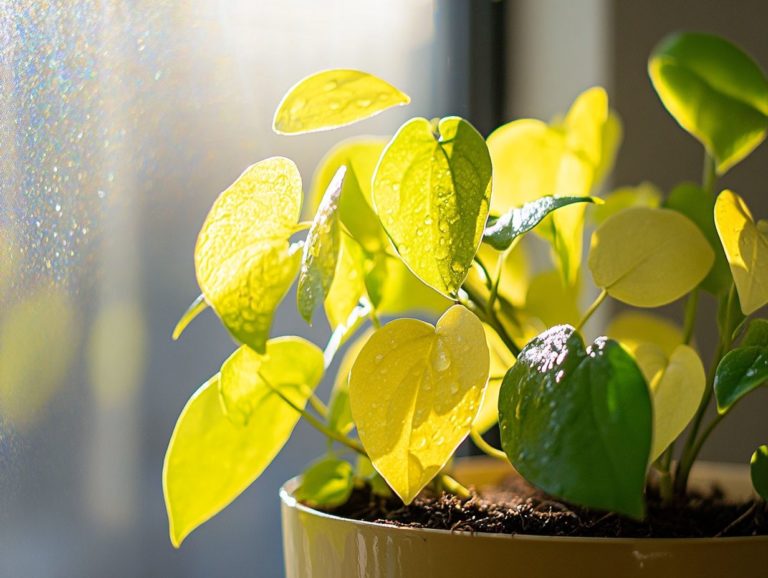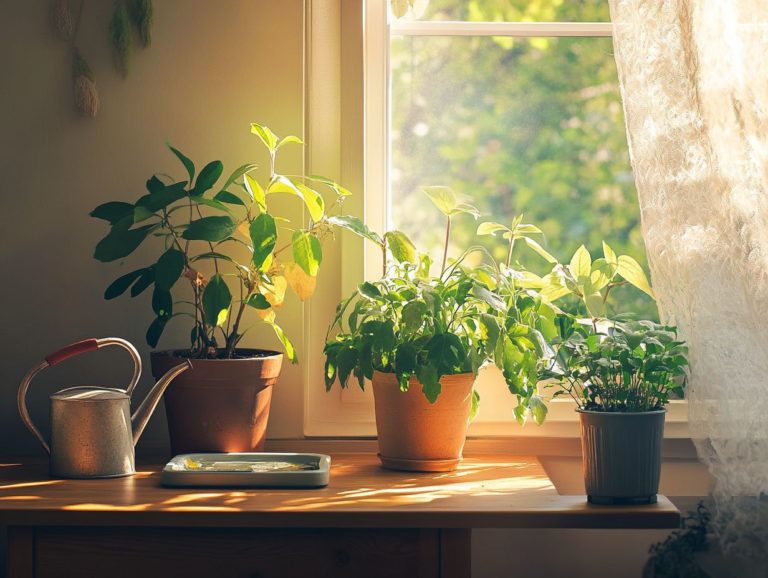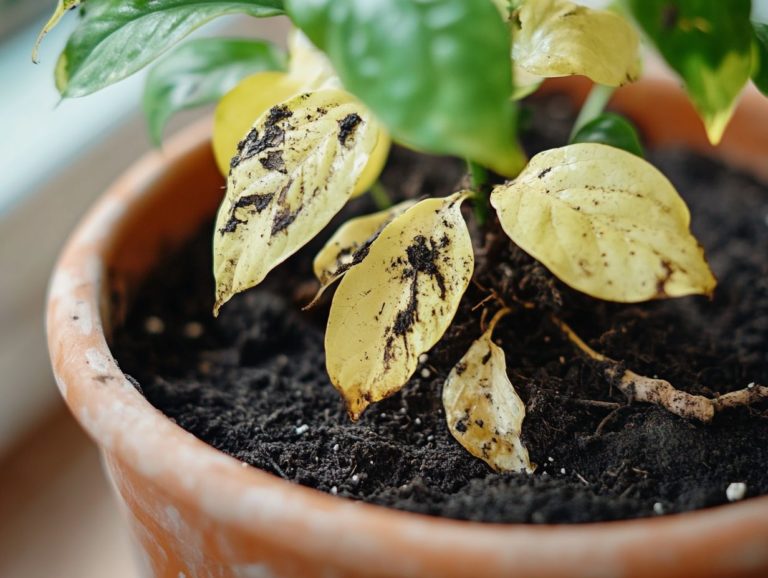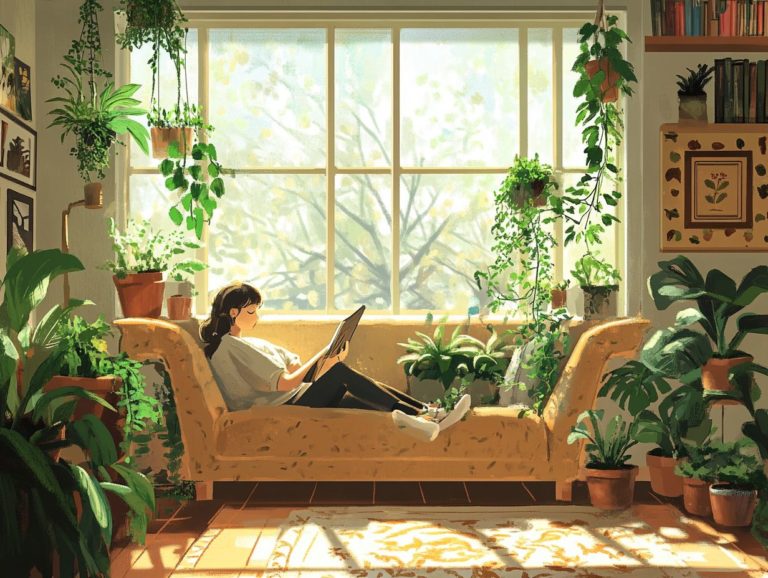What are the Common Myths About Indoor Plants?
Indoor plants have become a popular choice, turning your home or office into a lush, green sanctuary.
Yet, amidst all this excitement, myths abound that could put a damper on your plant parenting journey.
This article sets the record straight on those pesky misconceptions about plant care and dives into the numerous benefits that indoor greenery offers, such as uplifting your mood and enhancing air quality.
You’ll find guidance on selecting the perfect plants for your space, along with essential care tips to keep them thriving.
Get ready to transform your space into a thriving indoor jungle!
Contents
- Key Takeaways:
- Why are Indoor Plants Popular?
- Myths About Indoor Plants
- Benefits of Indoor Plants
- Choosing the Right Indoor Plants
- Caring for Indoor Plants
- Frequently Asked Questions
- Curious about myths surrounding indoor plants? Let s debunk them!
- Do indoor plants only need to be watered once a week?
- Is it true that all indoor plants require direct sunlight?
- Do indoor plants purify the air in a room?
- Can I use any type of soil for my indoor plants?
- Is it necessary to fertilize indoor plants regularly?
- Do indoor plants attract bugs and pests?
Key Takeaways:
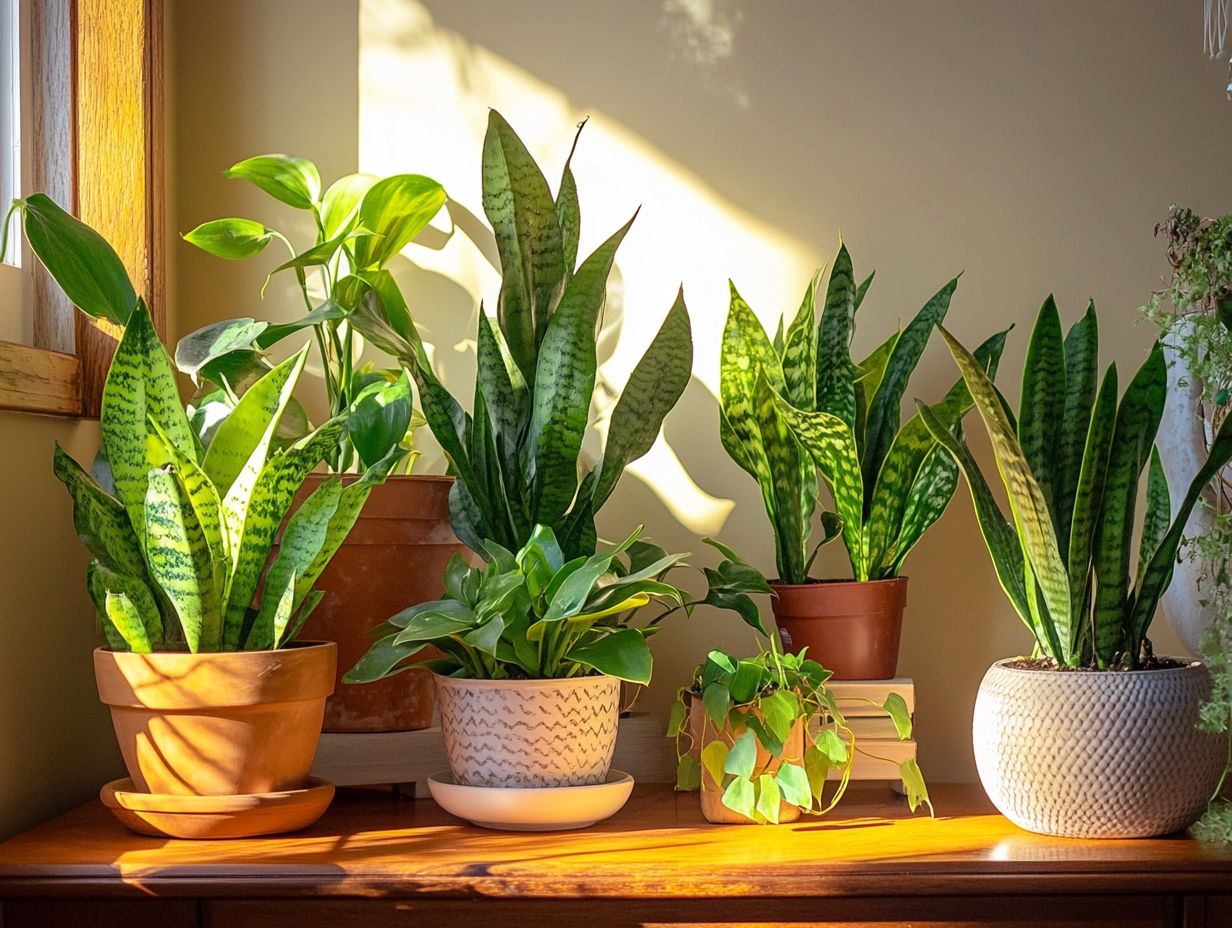
- Indoor plants are popular for their aesthetic appeal and health benefits, but there are many myths surrounding them, including misconceptions about watering and soil moisture.
- Common misconceptions, such as the belief that all indoor plants are high maintenance, can be debunked with proper knowledge and care.
- When choosing indoor plants, factors such as lighting, humidity, and space should be considered for optimal growth and maintenance.
Why are Indoor Plants Popular?
Indoor plants have become a popular choice, turning homes and offices into green spaces that elevate both air quality and visual charm. Their adaptability to various environments means they re perfect for everyone, whether you re just starting out or a seasoned plant enthusiast.
There s something profoundly rewarding about taking care of these green companions, and the mental health benefits they bring can significantly enhance your overall well-being.
With a wide array of indoor plants available ranging from low-light lovers to low-maintenance varieties you can easily tailor your space to reflect your unique lifestyle and preferences.
Myths About Indoor Plants
Despite their widespread appeal, numerous houseplant myths continue to circulate, often causing confusion and mismanagement among plant owners. You might believe that indoor plants are high-maintenance and demand exacting care, but the truth is that grasping their basic needs can lead to flourishing growth.
Misconceptions, such as the belief that all houseplants require constant sunlight or that yellow leaves automatically indicate poor health, can misguide your plant care practices. Debunking these myths helps you understand indoor plants better and establish a successful watering schedule that caters to the unique requirements of your green companions. For more insights, check out the most effective indoor plant care tips.
Debunking Common Misconceptions
Many misconceptions about houseplants, like the notion that they can t thrive on tap water, often lead to unnecessary anxiety for you as a plant owner, especially concerning chlorine levels in the water.
For example, you might think that only distilled water will keep your green companions happy, worrying that the chemicals in tap water could harm them. The truth is, most houseplants are incredibly adaptable and can thrive on regular tap water, as long as you let it sit for a bit to allow the chlorine a chemical often found in tap water that can affect plant health to dissipate.
Then there are the myths about how often to water, which can create quite a bit of confusion. Overwatering is frequently mistaken for good care, but this can lead to root rot a condition where plant roots decay due to too much water and a host of other problems.
By understanding the specific needs of each plant and learning how to gauge their hydration, you ll give you the power to nurture your plants more effectively and watch them flourish.
Benefits of Indoor Plants
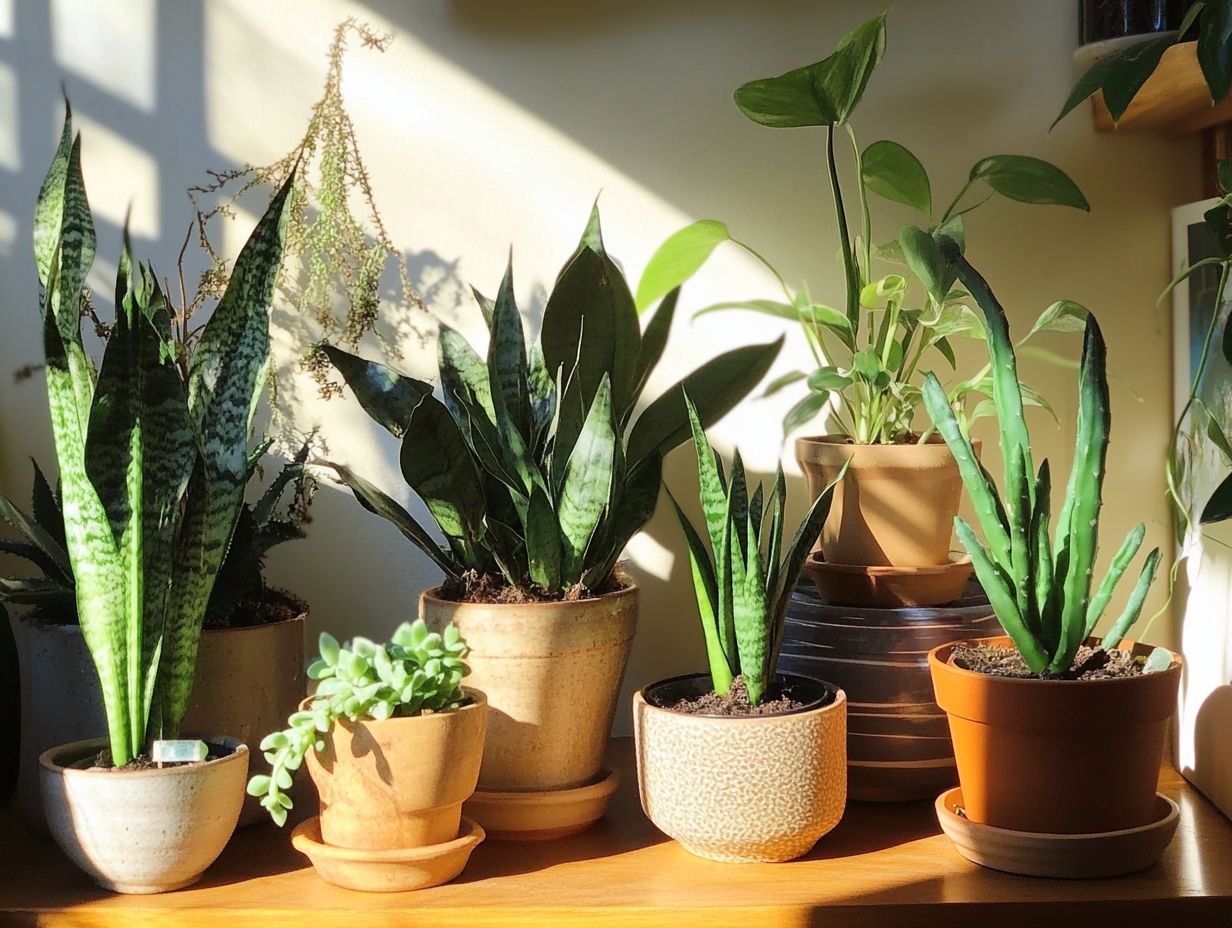
The advantages of indoor plants go well beyond mere aesthetics; they profoundly influence both personal health and environmental conditions.
Studies show that having indoor plants can significantly enhance air quality by filtering out toxins and boosting humidity, thereby creating a healthier living space.
Their calming presence also plays a vital role in mental well-being, helping to reduce stress and improve focus.
Taking care of these plants teaches you important gardening principles, such as the significance of plant nutrients and ideal environmental conditions. This knowledge ultimately encourages a more sustainable lifestyle, enriching your connection to the natural world.
Positive Effects on Health and Environment
The positive effects of indoor plants on your health and the environment have been thoroughly documented, revealing their numerous benefits. These green companions not only elevate the aesthetic of your space but also play a vital role in reducing stress and fostering a sense of well-being.
By releasing moisture into the air, indoor plants can raise humidity levels, creating a more comfortable living environment. This enhanced humidity is particularly advantageous for your respiratory health, alleviating issues caused by dry air.
Plants actively purify the air, filtering out toxins and improving overall air quality. This contributes to a revitalizing atmosphere that promotes relaxation and focus, making your space not just more beautiful but a sanctuary for your mind and body.
Choosing the Right Indoor Plants
Selecting the right indoor plants is essential for promoting best growth and ensuring longevity. Different species come with unique environmental requirements that must be met. Considerations such as pot size, humidity levels, and light availability are pivotal in a plant’s ability to flourish.
A solid grasp of these factors not only elevates the aesthetic charm of your space but also significantly enhances the overall health of the plants. Whether you choose low-light succulents or humidity-loving tropical varieties, understanding the specific needs of each plant is crucial for cultivating a vibrant indoor garden.
Factors to Consider for Optimal Growth
To ensure best growth for your indoor plants, several factors deserve your attention, including light conditions, watering schedules, and specific environmental requirements. Understanding how these elements interact is essential for cultivating a thriving indoor garden.
Light exposure is paramount; different species have unique needs in terms of sunlight intensity and duration to photosynthesize effectively. Moisture levels are just as crucial too much or too little humidity can cause stress or disease, potentially jeopardizing your plants’ health. A customized watering schedule is vital; neglecting to water can lead to dehydration, while overwatering might invite root rot, a condition caused by too much water that can kill plants.
By focusing on these key factors, including light exposure and watering practices, you can foster healthier plants that not only survive but truly flourish in your indoor spaces. To avoid pitfalls, consider learning about the most common missteps in indoor plant care.
Caring for Indoor Plants
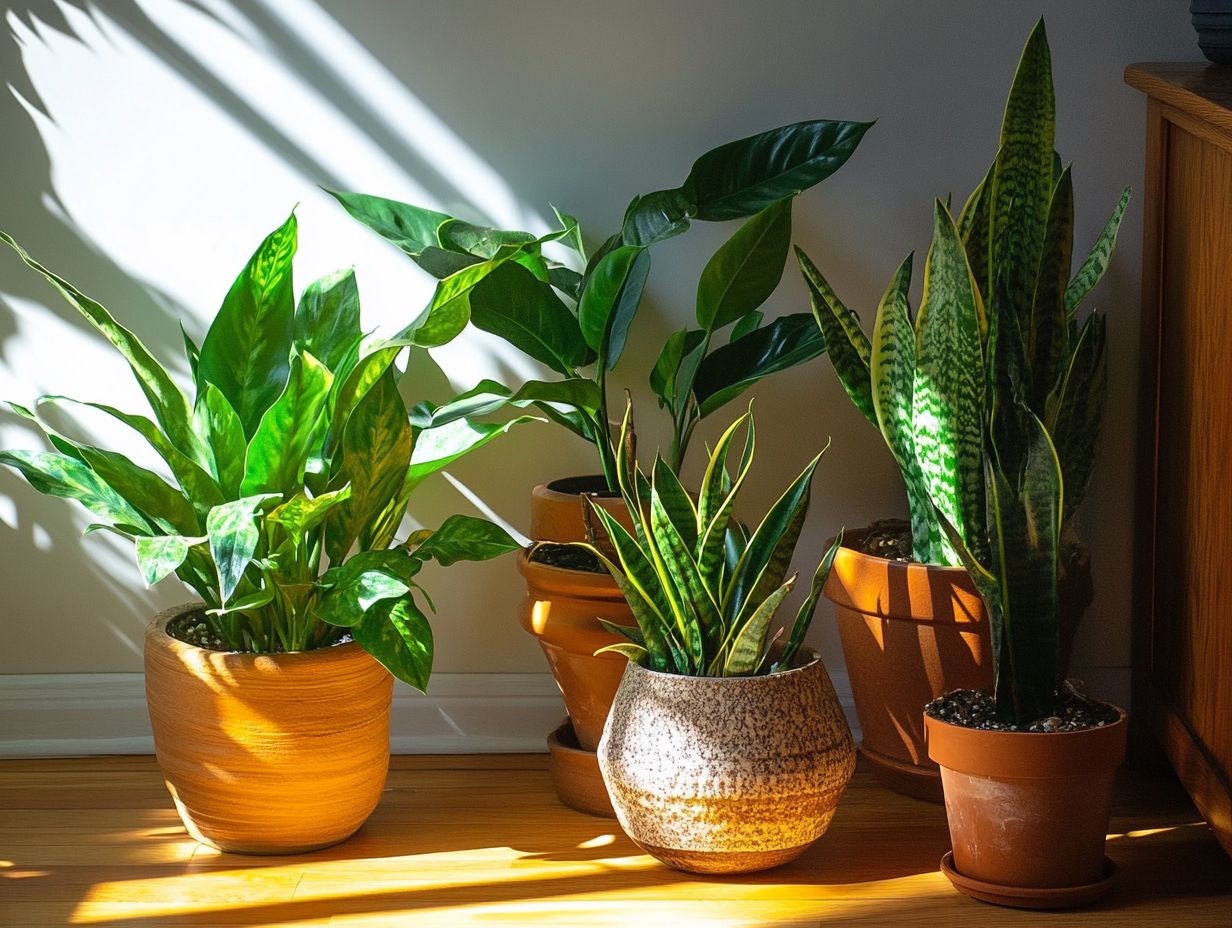
Caring for indoor plants demands a keen awareness of their individual needs and the application of effective maintenance techniques to nurture their health and vitality.
By establishing a consistent watering schedule and diligently monitoring soil moisture levels, you can avert common issues like root rot and unsightly yellow leaves. Regular inspections for pests and providing appropriate nutrients are crucial steps in addressing any challenges that may surface.
Moreover, grasping the specific requirements of each plant enables you to develop customized care strategies that ensure they flourish throughout the year.
Tips for Maintenance and Troubleshooting
Effective maintenance tips and troubleshooting techniques are essential for ensuring your indoor plants remain healthy and free from common issues like yellow leaves or pesky bugs.
By establishing a consistent watering schedule, you can significantly reduce the stress caused by over or under-watering, which often manifests in wilting or those unfortunate crisp, brown edges. Regularly inspecting for pests such as aphids or spider mites can help you catch infestations early, allowing for timely intervention.
For minor pest problems, a simple solution like insecticidal soap can work wonders, while adjusting light exposure can effectively tackle the frustrating yellowing of leaves.
These proactive and reactive strategies, including repotting plants when necessary, enhance the well-being of your plants and equip you with the knowledge to cultivate a thriving indoor garden.
Watch this quick guide on how to care for indoor plants!
Frequently Asked Questions
Curious about myths surrounding indoor plants? Let s debunk them!
There are many myths surrounding indoor plants; let’s clear them up!
Do indoor plants only need to be watered once a week?
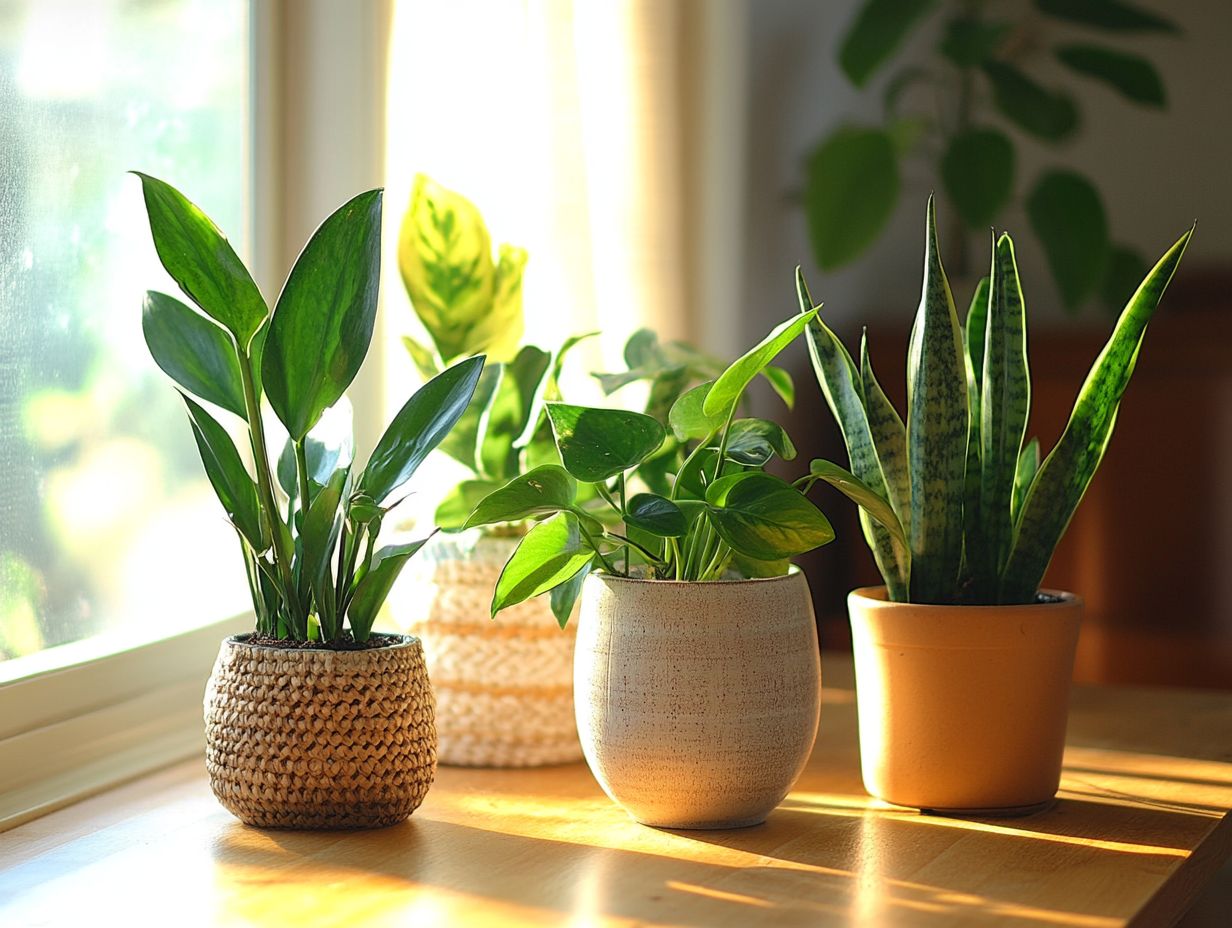
Not necessarily! Each plant has different watering needs. Check how wet the soil is before watering.
Is it true that all indoor plants require direct sunlight?
No! Many indoor plants thrive in low light. Always check the light needs of your specific plant.
Do indoor plants purify the air in a room?
Yes! Plants help clean the air, but they are not a replacement for proper ventilation and air filters.
Can I use any type of soil for my indoor plants?
No, you need special soil that drains well and holds moisture. Regular garden soil can harm your plants.
Is it necessary to fertilize indoor plants regularly?
It varies by plant. Some love a little fertilizer, while others do just fine without it!
Do indoor plants attract bugs and pests?
Not automatically! With proper care, you can prevent pests from bothering your plants.

